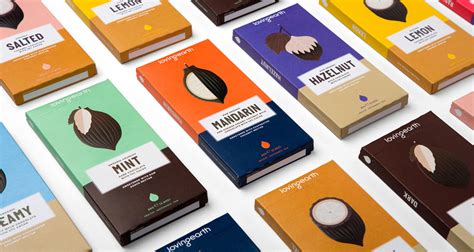Introduction
Pet owners are increasingly seeking eco-friendly options for their furry companions, and pet food packaging is no exception. Traditional pet food packaging is often made from plastic, which can take hundreds of years to decompose and pollute our oceans and landfills. However, several eco-friendly alternatives are now available that are not only better for the environment but also healthier for pets.

The Importance of Eco-friendly Pet Food Packaging
There are several reasons why eco-friendly pet food packaging is important:
- Environmental sustainability: Plastic pet food packaging contributes to environmental pollution. Eco-friendly packaging reduces plastic waste and helps conserve natural resources.
- Health benefits for pets: Some plastic packaging contains harmful chemicals that can leach into pet food and potentially harm animals. Eco-friendly packaging is made from materials that are safe for pets.
- Increased consumer demand: Consumers are becoming more aware of the environmental impact of their choices. Pet food companies that offer eco-friendly packaging are likely to gain a competitive advantage.
Biodegradable Materials
One of the most important considerations for eco-friendly pet food packaging is choosing biodegradable materials. Biodegradable materials break down naturally over time, reducing the accumulation of waste in landfills and oceans. Some commonly used biodegradable materials for pet food packaging include:
- Paper: Paper is a renewable resource that is biodegradable and compostable. It is also lightweight and inexpensive, making it a practical option for pet food packaging.
- Cardboard: Cardboard is similar to paper but thicker and more durable. It is also biodegradable and compostable, making it a good choice for larger pet food packages.
- Cornstarch: Cornstarch is a biodegradable polymer derived from corn. It is strong and durable, making it suitable for packaging dry pet food.
- Plant-based plastics: Plant-based plastics are made from renewable resources such as corn, sugarcane, or cellulose. They are biodegradable and compostable, unlike traditional plastic.
Sustainable Production Practices
In addition to using biodegradable materials, sustainable production practices are essential for eco-friendly pet food packaging. These practices include:
- Reducing energy consumption: Using renewable energy sources, optimizing production processes, and reducing waste can reduce the environmental impact of pet food packaging production.
- Reducing water consumption: Water consumption during packaging production can be reduced by using water-efficient technologies and recycling water.
- Reducing carbon emissions: By using renewable energy sources and efficient transportation methods, pet food companies can reduce their carbon footprint.
Innovative Eco-friendly Packaging Designs
Several innovative eco-friendly pet food packaging designs are emerging. These designs not only meet the requirements of biodegradability and sustainability but also offer unique features:
- Edible packaging: Edible packaging is made from materials that pets can safely consume, such as seaweed or vegetable starch. This eliminates the need for separate packaging and reduces waste.
- Reusable packaging: Reusable packaging can be used multiple times, eliminating the need for single-use packaging. This option is suitable for pet food containers or dispensers.
- Minimalist packaging: Minimalist packaging uses the minimum amount of materials necessary to protect the product. This reduces waste and lowers the environmental impact.
- Multipurpose packaging: Multipurpose packaging can serve multiple functions beyond packaging pet food. For example, a pet food bag could also be used as a toy or bed for the pet.
Tips for Implementing Eco-friendly Pet Food Packaging
If you’re considering implementing eco-friendly pet food packaging, here are some tips to get started:
- Choose biodegradable materials: Opt for packaging materials that are biodegradable and compostable to minimize waste.
- Consider sustainable production practices: Partner with manufacturers that prioritize reducing energy and water consumption, as well as carbon emissions.
- Look for innovative designs: Explore innovative packaging designs that offer additional benefits, such as edible packaging or reusable containers.
- Educate your customers: Communicate the eco-friendly features of your packaging to your customers to raise awareness and build brand loyalty.
- Partner with industry organizations: Join or collaborate with organizations that promote sustainable packaging practices in the pet food industry.
Pros and Cons of Eco-friendly Pet Food Packaging
FAQs
-
Is eco-friendly pet food packaging more expensive than traditional packaging?
While eco-friendly packaging can have a higher upfront cost, it often saves money in the long run by reducing waste disposal costs and enhancing brand image. -
Is eco-friendly pet food packaging as durable as traditional packaging?
Yes, several eco-friendly packaging materials offer comparable or even superior durability to traditional plastic packaging. -
Is eco-friendly pet food packaging safe for pets?
Yes, eco-friendly packaging materials undergo rigorous testing to ensure they are safe for pets and do not leach harmful chemicals into food. -
How can I recycle eco-friendly pet food packaging?
Follow the recycling guidelines provided by your local waste management service. Some eco-friendly packaging materials may require specialized recycling facilities. -
What’s the future of eco-friendly pet food packaging?
The future of eco-friendly pet food packaging is promising, with ongoing research and development leading to new and innovative materials and designs that further reduce environmental impact.
Conclusion
Eco-friendly pet food packaging is a critical step towards reducing environmental pollution and creating a healthier and more sustainable future for pets and our planet. By choosing biodegradable materials, implementing sustainable production practices, and exploring innovative designs, pet food companies can make a positive impact on the environment while meeting the evolving needs of consumers and pets.





















